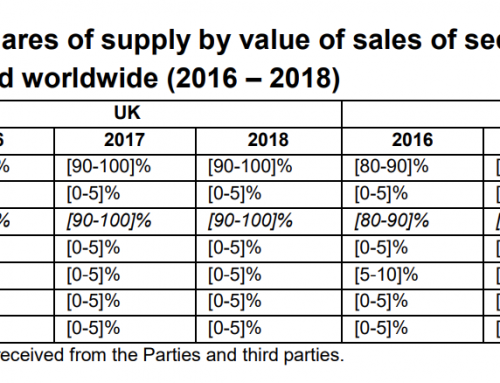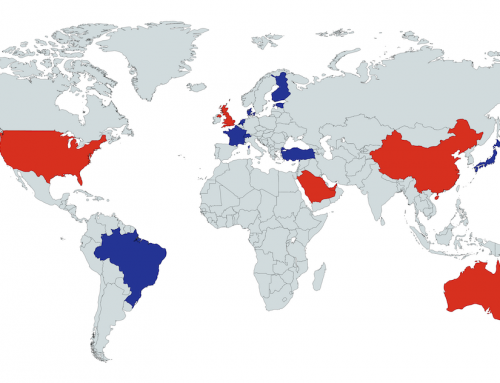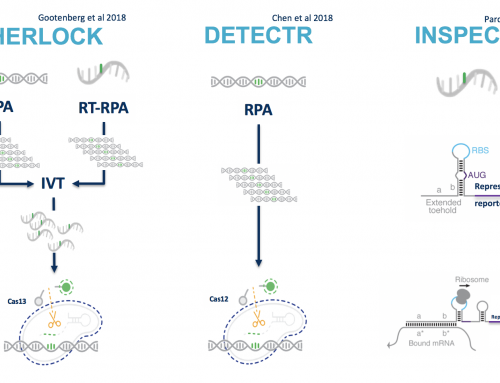Prof Yutaka Suzuki’s lab at the University of Tokyo published a paper last week in DNA research: Sequencing and phasing cancer mutations in lung cancers using a long-read portable sequencer. In the paper they described their work detecting SNVs in EGFR, KRAS, NRAS and NF1, and EML4-ALK, CCDC6-RET and 5 other gene fusions on ONTs MinION nanopore sequencer. They also phased the mutations in EGFR and present a small amount of data on clinical samples. A couple of other nanopore sequencing papers reported cancer sequencing quite recently so I anted to summarise them here.
The Suzuki lab at the Graduate School of Frontier Sciences, University of Tokyo, is a cancer genomics group working on the development of novel technologies for use in understanding cancer and other disease. They are also running a field based malaria study in Indonesia. I’m fortunate enough to be visiting the Suzuki lab on a CRUK Research Travel award for July (and will then be on holidays travelling round Japan with my family).
Initial discussions of using MinION for cancer mutation calling were generally quite negative due to the high error rate reported (15-30% two years ago) and the fact that the MinION was not a short-read sequencer. The per base error rate has improved dramatically and consensus sequencing pushes accuracy very high. And while long-reads keep getting longer and longer (see recent posts from the Loman lab, recent cDNA sequencing shows that 10 million + reads is possible on a MinION flowcell.
However MinION has only recently been used to detect cancer mutations: see Minervini et al in 2016, and Suzuki et al and Euskirchen et al in 2017.
Minervini et al
used MinION to detect TP53 mutations in chronic lymphocytic leukemia patients patients. They discuss the high error rate of raw nanopore sequencing data (15% including indels) but reported how error correction methods can improve these results (4% after correction).
Suzuki et al
published their study showing the use of amplicon sequencing in cancer reporting a high true-positive rate (39 of 41) for SNVs of greater than 10% allele frequency, but reported that minor alleles (<10%) were more difficult to detect. They also reported that SNV detection was more difficult where SNVs were located within or adjacent to >3-base homopolymer sequences. To further improve their analysis they called SNVs from reads with zero mis-matches in the ±3bp surrounding the SNV. So the sequence context of your cancer variant matters.
That the MinION struggles in homoplymer stretches of DNA has been widely reported. Other data has also show that InDels are a significant source of error – the nanopore sequencing removes or adds bases making Indels more difficult to verify. But SNVs, especially when using high-depth sequencing are much more reliable opening the door to clinical tests.
The Suzuki et al paper used cancer gene cDNA amplicon sequencing to detect SNVs in EGFR, KRAS and NRAS. RNA was reverse transcribed with SuperScript II, and used as the template for PCR amplification with Phusion polymerase. 1ug of amplicon was used to prepare MinION sequencing libraries using the Nanopore Sequencing Kit – SQK-MAP005 (SQK-MAP006 was used for the clinical samples – things move fast in the Nanopore world). Poretools was used to generate FastQ. SNV detection was performed by extracting reads teat aligned to the genes of interest, and calling SNV candidates from only high-depth (>100 reads) sequences without errors ±3 bp of the region of interest. Deletions were detected similarly to the SNVs. For fusion transcript detection MinION reads were aligned to an mRNA reference using a slit-read alignment. Reads that were split between two genes were counted and those with >100 reads used to call fusions. Their results show that various categories of cancer mutations can be detected by MinION sequencing.
Euskirchen et al
presented a study using low-coverage whole genome sequencing to detect copy number variations (CNVs) in brain cancer. Whole genome sequencing libraries were prepped with Rapid 1D Sequencing Kits (SQK-RAD001, SQK-RAD002, or SQK-RBK001), after seuencing CNVs were analysed with the QDNAseq package.

Euskirchen et al 2017 Fig1
They were able to achieve same-day detection of structural variants, as well as point mutations, and methylation profiling. In their cohort of 28 patients the sWGS run of 6 hours yielded read depths of <0.01X to 0.24X. The authors state that this protocol “meet the needs of the WHO 2016 classification of CNS tumors” .
Read-depth not read-length
Suzuki et al highlight the fact that low read numbers on the MinIONs are a significant part of the problem with it’s performance in low-frequency allele detection (low-depth in this study was <100 reads). And Euskirchen et al highlight the need to generate sufficient reads for sWGS. For both amplicon sequencing and sWGS read numbers are of higher importance than read length.
In both assays the Illumina platforms also perform badly at low read depth and amplicon sequencing studies looking for low-frequency alleles often use many 1000x coverage of the targeted bases, whilst sWGS studies will use 10-20 million reads per sample. As such increasing the read count from MinION is likely to be a focus for groups wanting to perform high-quality low allele frequency quantitation, or copy-number analysis by sWGS.
Using nanopores in the clinic
We’re only just beginning to use Illumina sequencers in the clinic so I think we’ll be waiting a little longer for nanopores to arrive in the hands of doctors. However I do believe this is a technology that could be in the hands (or phones) of doctors and nurses in the future. With the iPhone compatible sequencer announced in 2016 (see SmidgION coverage on my blog and on FrontLineGenomics blog) who knows what the future will be like for cancer doctors, or for cancer patients.
ED YONG reported in The Atlantic what impact this might have and included the sorty of Kris Griffin, a chronic myeloid leukaemia patient, who said “I want to be the guinea pig—the first person with CML to monitor my blood at home.Psychologically, [this] feels so important”.
PS: If you’re a Japanese reader of Core Genomics get in touch in the comments or on Twitter and lets meet up over a beer or some Sake!













Leave A Comment